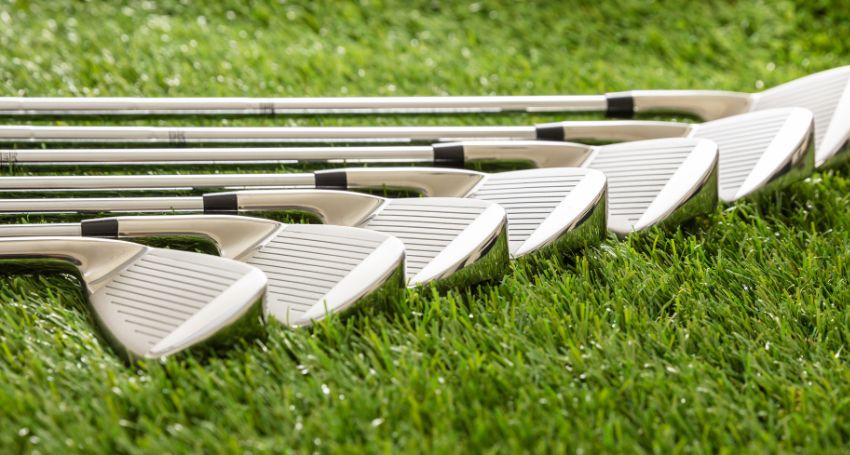Understanding the different types of golf wedges is key to improving your short game and lowering your score. This article dives into the essential details of each wedge type, its uses, and how it can transform your performance on the golf course. Whether you’re new to golf or looking to upgrade your wedge game, this comprehensive guide is a must-read for any golfer.
What Is a Golf Wedge?
A wedge is a type of golf club designed for short-range, high-precision shots. Known for their high loft angles, wedges are crucial for getting the golf ball onto the green, out of tricky spots, or close to the pin. They are indispensable for perfecting the short game, making them a must-have in any golf bag.
Golf wedges are also versatile clubs, offering options for varied types of shots. Whether you’re navigating bunkers, dealing with tight lies, or making an approach to the green, wedges help golfers execute these shots with accuracy and control.
Different Types of Golf Wedges
There are four primary types of wedges: pitching wedge, gap wedge, sand wedge, and lob wedge. Each has a specific degree of loft and purpose:
- Pitching Wedge: Typically with a loft of 44-48 degrees.
- Gap Wedge: Filling the loft gap with 50-54 degrees.
- Sand Wedge: Designed for bunkers, usually 54-58 degrees.
- Lob Wedge: Offering maximum loft at 58-64 degrees.
These wedges help golfers tackle different shot types and are key to achieving consistency on the golf course.
1. Pitching Wedge
The pitching wedge is one of the most commonly used wedges in golf. It usually has a loft angle between 44 and 48 degrees and is included in most iron sets. Golf experts consider the pitching wedge essential for approach shots and low-loft chipping.
Why Use a Pitching Wedge?
A pitching wedge is typically used for shots ranging from 110 to 140 yards. This wedge is perfect for controlled full swings and even bump-and-run shots around the green.
2. Gap Wedge
The gap wedge, often known as an approach wedge, fills the gap between a pitching wedge and a sand wedge. With a loft of 50 to 54 degrees, this wedge is designed for precision in mid-range shots.
Key Features of the Gap Wedge
- Provides versatility for 90 to 110-yard shots.
- Known as an approach wedge due to its reliability for pinpoint accuracy.
The gap wedge is ideal for golfers who need to bridge the distance between their pitching and sand wedges.
3. Sand Wedge
The sand wedge, as the name suggests, is designed to help players get golf balls out of sand traps. It typically has a loft angle between 54 and 58 degrees, with a high bounce to prevent digging into the sand.
Why Use a Sand Wedge?
- Perfect for bunker shots and soft lies.
- Excellent for pitch shots requiring controlled height and spin.
Many golfers find that a sand wedge works well for mid-loft shots that need a soft landing.
4. Lob Wedge
The lob wedge offers the highest degree of loft, typically ranging from 58 to 64 degrees. This wedge is used for short, high-precision shots, especially over obstacles or onto small greens.
When to Use a Lob Wedge?
- For shots requiring a high trajectory and minimal roll.
- Ideal for delicate flop shots or getting over hazards.
While not every golfer carries a lob wedge, it is an invaluable tool for tricky situations.
Wedge Loft and Bounce
Wedge loft is the degree of loft angle on the clubface, influencing the ball’s trajectory. Bounce refers to the angle between the sole of the wedge and the ground, which determines how the club interacts with turf and sand.
- High Bounce Wedge: Great for soft sand and fluffy lies.
- Low Bounce Wedge: Better for firm turf and tight lies.
Understanding these factors can help golfers select the right wedges for different courses.
Choosing the Right Wedges
To build the perfect set of wedges, golfers should consider their skill level, the type of golf course they frequent, and their playing style. A typical golf bag includes at least two wedges, but many golfers carry all four for versatility.
Tips for Selecting Wedges
- Match wedge lofts to eliminate distance gaps.
- Include a sand wedge for bunker play and a lob wedge for precision.
Finding the perfect wedges helps golfers execute a variety of shots with confidence.
Wedge Grinds and Their Impact
Wedge grind refers to the shaping of the sole of the wedge. It affects how the wedge interacts with turf and sand during a swing. Wedge options with specific grinds can enhance performance in challenging conditions.
Common Types of Grinds
- C-Grind: Suitable for open-face shots.
- S-Grind: Versatile for various lies.
Knowing more about wedge grinds can significantly improve your golf game.
FAQs
What is the difference between golf wedges?
Each wedge type serves a specific purpose, from long approach shots to delicate chips.
How many wedges should you carry?
Many golfers prefer carrying at least three wedges to cover all shot types.
What is a wedge loft chart?
A wedge loft chart shows the degree of loft for each wedge, helping players choose the right club for their needs.





























































